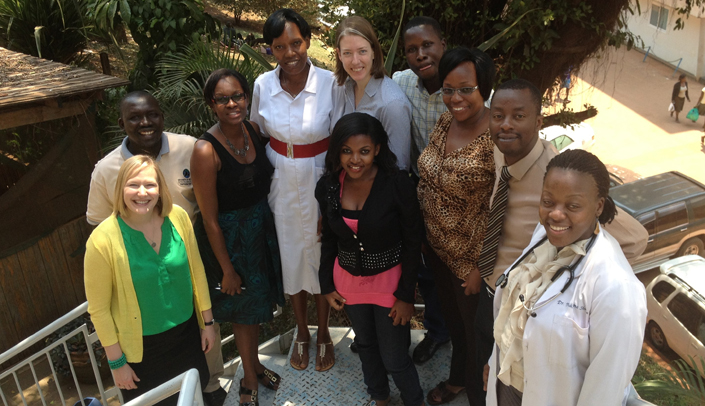HIV has gone from being a death sentence to something you treat with pills. Today, those with HIV can, by and large, live normal lives.
“I believe that part of HIV becoming a long-term chronic illness is allowing families affected by HIV to have the opportunity to have children and to raise children,” said Kim Scarsi, Pharm.D., associate professor of pharmacy practice.
In sub-Saharan Africa, that can prove complicated. Resource-limited settings, Dr. Scarsi said, have much higher levels of maternal and infant mortality and morbidity.
But research indicates women in these settings tend to have healthier families when they can plan for them, and have some control over their lives and health.
So Dr. Scarsi is part of a National Institutes of Health-funded team working to improve the lives of women in sub-Saharan Africa, where resources tend to be less plentiful than they often are in the U.S., and where HIV infection is a reality for many.
But the same antiretroviral therapies that keep HIV at bay — and can effectively prevent HIV transmission from mother to child — may or may not interact well with contraceptives, for those who choose to use them. That’s where clinical pharmacology comes in.
Dr. Scarsi’s collaborators include colleagues from Makarere University and the Infectious Diseases Institute, both in Kampala, Uganda. They studied three groups of HIV-infected women who choose to use contraceptive implants — those on two types of antiretroviral treatments, and a third group who were not on antiretroviral meds.
(In some countries, not every HIV patient goes immediately to antiretroviral meds; instead, levels are monitored until medication is deemed necessary based on national guidelines.)
Dr. Scarsi recently presented the team’s research findings at HIV Glasgow, an international congress on HIV-drug therapy.
They found that the hormone concentrations were not reduced in one of the anti-HIV drugs. But with the other, the hormone concentrations were approximately 50 percent lower. Unfortunately, the latter is the better, preferred anti-HIV medication, which is recommended by the World Health Organization as the first therapy for all HIV-infected patients.
The next step is to try to find a way for the preferred HIV drug to work with the implant, to help these women have options, in addition to highly effective HIV therapy.
